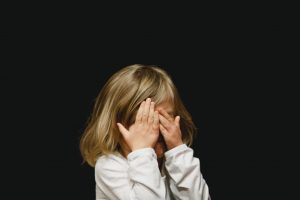4.8 Sexual Abuse

Sexual abuse is when a person uses his or her power over a child and involves the child in any sexual act. It can include fondling, genital stimulation, mutual masturbation, oral sex, using fingers, penis or objects for oral, vaginal and/or anal penetration, inappropriate sexual language, sexual harassment, voyeurism, exposing oneself, sexual exploitation, as well as technology-assisted sexual abuse. This can involve exposing the child to sexual abuse images and/or videos or involving a child in the making of sexual abuse images and/or videos commonly known as child pornography or involvement in the sex trade (prostitution) or human trafficking (Crosson-Tower, 2020; Tufford, 2020; Jonson-Reid & Drake, 2018; Rimer & Prager, 2016).
Signs of sexual abuse may include (but are not limited to):
- Re-enactment of abuse using dolls, drawings or friends
- Clinging
- Thumb-sucking
- Sudden fear of the dark
- Change in behaviour
- Behaviour extremism—aggressiveness or withdrawal
- Recurrent nightmares or disturbed sleep patterns
- Perfectionism
- Loss of appetite for no apparent reason or excessive appetite
- Bedwetting
- Avoidance of undressing or wearing extra layers of clothes
- Abrupt decline in school performance
- Request to change something. E.g., Child, “I want to take baseball now, not swimming lessons. I don’t like swimming lessons anymore.”
- Frequent sore throats or urinary infections
- Soreness in the genitals
- Constant sadness
- New possessions that are unexplained (gifts from the perpetrator)
- Young child overly focused on private parts
- Publicly masturbates
- Imitates sexual acts
- Sexualized interactions
- Graphically imitates or re-enacts adult sexual acts
- Unexplained stomach aches/headaches
- Encopresis, Enuresis
- Breaches personal boundaries
- Draws sexually explicit behaviour
- Hates their gender
- Tells sexualized jokes
- Preoccupied with pornography
- Coerces others to engage in sexual activity without their consent
- Sends naked provocative pictures of oneself or others with malicious intent
(“Child Abuse and Neglect,” n.d.; Crosson-Tower, 2020; Durrant et al., 2006; Fallon et al., 2020; Jonson-Reid & Drake, 2018; Ontario Association of Children’s Aid Societies, 2022; Fallon et al., 2020; Public Health Agency of Canada, 2012; Rimer & Prager 2016; Sedlak et al., 2010; Toronto Children’s Aid Society, n.d.; Tufford 2020).

